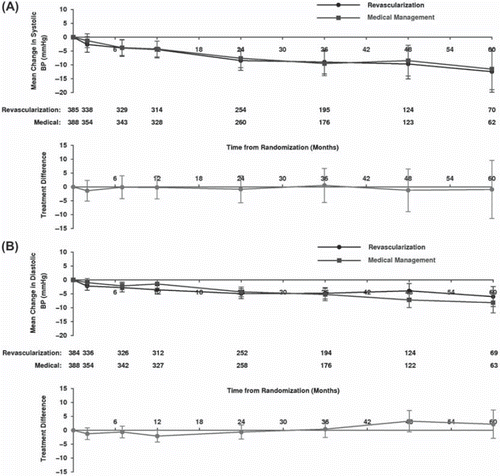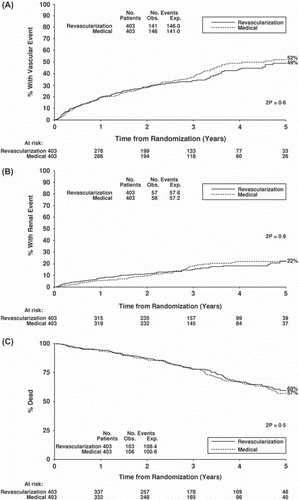Figures & data
Figure 1. A: Mean change in systolic blood pressure over time in ASTRAL. B: Mean change in diastolic blood pressure over time in ASTRAL. Top graph: blood pressures for revascularized and medically managed patients. Bottom graph: difference in blood pressure between groups. (Wheatley, K. et al. Revascularization versus medical therapy for renal-artery stenosis. N Engl J Med, 2009. Reproduced with permission.)

Figure 2. Reciprocal of serum creatinine over time in ASTRAL (primary study end-point). Top graph: reciprocal of serum creatinine for revascularized and medically managed patients. Bottom graph: difference in reciprocal of serum creatinine between groups. (Wheatley, K. et al. Revascularization versus medical therapy for renal-artery stenosis. N Engl J Med, 2009. Reproduced with permission.)

Figure 3. A: Survival curve for time to first vascular event in ASTRAL. End-points of myocardial infarction, stroke, vascular death, hospitalization for angina, fluid overload or cardiac failure, coronary artery procedure, or other arterial procedure. B: Survival curve for time to first renal event in ASTRAL. End-points of acute renal failure, commencement of dialysis, transplantation, nephrectomy, or renal death. C: Overall patient survival curve in ASTRAL. Solid line = revascularization; dotted line = medical therapy. (Wheatley, K. et al. Revascularization versus medical therapy for renal-artery stenosis. N Engl J Med, 2009. Reproduced with permission.)

